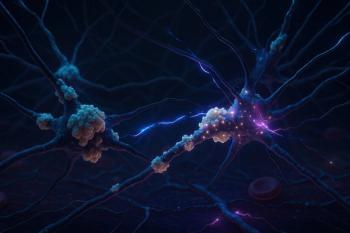
New Drug Application Submitted for Centanafidine for Treatment of ADHD
Key Takeaways
- Centanafadine is a first-in-class norepinephrine, dopamine, and serotonin reuptake inhibitor for ADHD, showing significant symptom improvement in phase 3 trials.
- The drug demonstrated a favorable safety profile with common adverse events including decreased appetite, nausea, and headache, and showed low abuse potential.
Otsuka Pharmaceutical submits a new drug application for centanafadine for treatment of ADHD, showing significant efficacy across all age groups.
Otsuka Pharmaceutical has submitted a new drug application (NDA) to the US Food and Drug Administration for centanafadine for treatment of attention deficit hyperactive disorder (ADHD) in children, adolescents, and adults.1 Centanafadine is the first investigational norepinephrine, dopamine, and serotonin reuptake inhibitor (NDSRI) for ADHD therapy.
NDA submission for this drug is based on results from 4 phase 3 clinical trials which evaluated the efficacy and safety of centanafadine. In these phase 3 studies, centanafadine showed statistically significant and clinically meaningful improvements in symptoms of ADHD. The phase 3 program included 1 trial for children, 1 trial for adolescents, and 2 trials for adults. Centanafadine was well tolerated across the trials conducted, with the most common adverse events of decreased appetite, nausea, rash, fatigue, abdominal pain, and somnolence in children, and decreased appetite and headache in adults. All trials showed low potential for abuse and dependence with this drug.
The phase 3 trial in children was a randomized, double-blind, 3-arm, fixed-dose study of centanafadine in children 4 to 12 years old with ADHD.2 Participant dosing was weight-based, with patients receiving either a high, low, or placebo dose. The primary endpoint was change from baseline in ADHD Rating Scale-5 (ADHD-RS-5) score at week 6. Statistically significant results were found from the high dose group, but the low dose group did not show significant results. Centanafadine did show favorable safety and tolerability profile, with most common adverse events of decreased appetite, rash, and vomiting. For the phase 3 trial in adolescents, the same study structure was used in evaluating adolescents 13 to 17 years old with ADHD.3 The ADHD-RS-5 was used in this trial as well, with significant reductions in symptoms in the high dose group. The most common adverse events in this age group were decreased appetite, nausea, headache, and rash.
In the phase 3 trials for adults, the studies were randomized, double-blind, and placebo-controlled, evaluating centanafadine sustained release tablet in adults aged 18 to 55 with ADHD.4 Adult participants received either centanafadine 200 mg, 400 mg, or placebo over 6 weeks. The primary endpoint was change from baseline over the 6 week treatment period, using the Adult ADHD Investigator Symptom Rating Scale. Both dosage groups showed statistically significant and clinically meaningful improvement compared to placebo. The most common adverse events for this group were decreased appetite and headache.
“As an innovator in mental health, we are pleased to take this important step forward in the hope of providing a novel treatment option to patients living with ADHD,” John Kraus, MD, PhD, executive vice president and chief medical officer of Otsuka Pharmaceutical Development & Commercialization, Inc, noted in a press release. “Centanafadine represents a first in class mechanism of action among available ADHD therapies, and if approved, may expand the range of options available to those managing this complex condition. We are grateful to the patients and caregivers for their participation in these trials,” he added.
Centanafadine is a first-in-class norepinephrine, dopamine, and serotonin reuptake inhibitor. Studies have shown the drug to significantly reduce core symptoms of ADHD in multiple age groups. The drug works most strongly on norepinephrine transporters, along with less pronounced effects on dopamine and serotonin. Centanafadine has a more notable effect on serotonin, compared with traditional stimulant ADHD medications.
References
1. Otstuka Pharmaceutical submits New Drug Application to US FDA for centanafadine for the treatment of ADHD in children, adolescents, and adults. Press release. November 24, 2025. Accessed November 25, 2025.
2. Ward CL, Wilens TE, Jin N, et al. Efficacy and safety of centanafadine for ADHD treatment in children: a randomized clinical trial. Am Acad Ped. 2025;1(3):1-11.
3. Ward CL, Childress AC, Jin N, et al. Centanafadine for attention deficit/hyperactivity disorder in adolescents: a randomized clinical trial. J Am Acad Child Ad Psych. 2025.
4. Lenard AA, Adams J, Madera-McDonough J, et al. Efficacy, safety, and tolerability of centanafadine sustained-release tablets in adults with attention deficit/hyperactivity disorder: results of 2 phase 3 randomized, double-blind, multicenter, placebo-controlled trials. J Clin Psychopharm. 2022;42(5):429-439
5. Centanafadine: a novel triple reuptake inhibitor for the treatment of ADHD in adolescents. MGH Psychiatry News. September 17, 2025. Accessed November 25, 2025.
Newsletter
Receive trusted psychiatric news, expert analysis, and clinical insights — subscribe today to support your practice and your patients.














